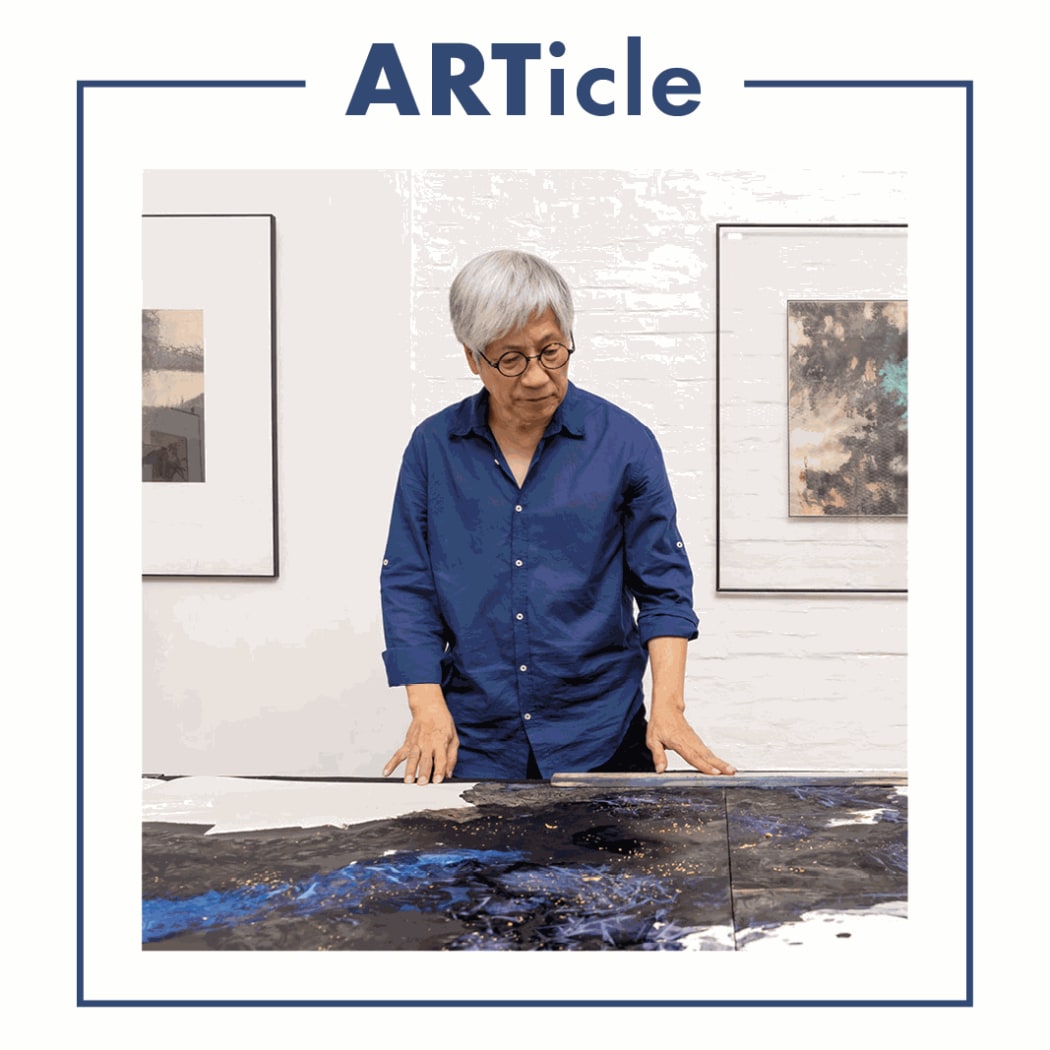
For this edition of ARTicle, we are delighted to present extracts from the Director of the SOAS Postgraduate Diploma in Asian Art and Senior Lecturer in Arts Education, Dr Malcolm McNeill's interview with Raymond Fung, in which Dr Malcolm aims to discuss the artistic development and architectural precision with the artist.
"Raymond Fung is exactly what you want in a contemporary ink artist. He is a master of technique, exacting in his presentation, and original in his concepts. Raymond has a contagious energy and a refreshing directness. These qualities are not so often cited in the biographies that preface his numerous exhibitions catalogues. Instead, Raymond’s bios tend to introduce him by enumerating his extensive awards and accolades, received in his dual creative careers as an ink painter and an architect. Speaking to Raymond via an online video call I had the pleasure of experiencing his energy, precision, and frankness first-hand. The following text is an edited version of our conversation."
- Dr Malcolm McNeill
Malcolm McNeill (MM): Raymond, thank you very much for joining me today. You are in the rare position of being both an award-winning architect and a widely collected and exhibited ink artist. How do you balance or integrate these two elements of your creative career?
Raymond Fung (RF): Well, because of my dedication to fine art, whether or not I’m an architect I have remained an artist throughout my life. Of course, to a certain extent being an architect gives me a better understanding of the world from a fine art perspective. Particularly because architecture always refers to solid and void compositions. This has been very influential in my development, because of an attachment to space, to textural qualities.
MM: Can you describe the different emotional experiences when you pick up a pencil at your architectural drawing board and when you pick up a brush in your studio? Are you accessing different parts of yourself in these different creative processes?
RF: These are definitely two very different attitudes. First of all, using pencil on paper versus using a brush on silk or paper is very different. The emotions of painting in ink on paper develop from the ink itself, but you can control pencil, whether you do a single line or you apply it in a bigger space. It’s a very different kind of technique. What my work with a brush and with a pencil have in common is how I read qualities, how I read a composition, how I read the interplay between solid and void. This really has the greatest influence on me, because in architecture, we always go with solid and void compositions: windows and walls, soft and hard, that kind of interplay in the spaces around us.

Raymond Fung, Breathing (1), Ink and colour on paper (Quadriptych), 2020, 88.5 x 354cm (total)
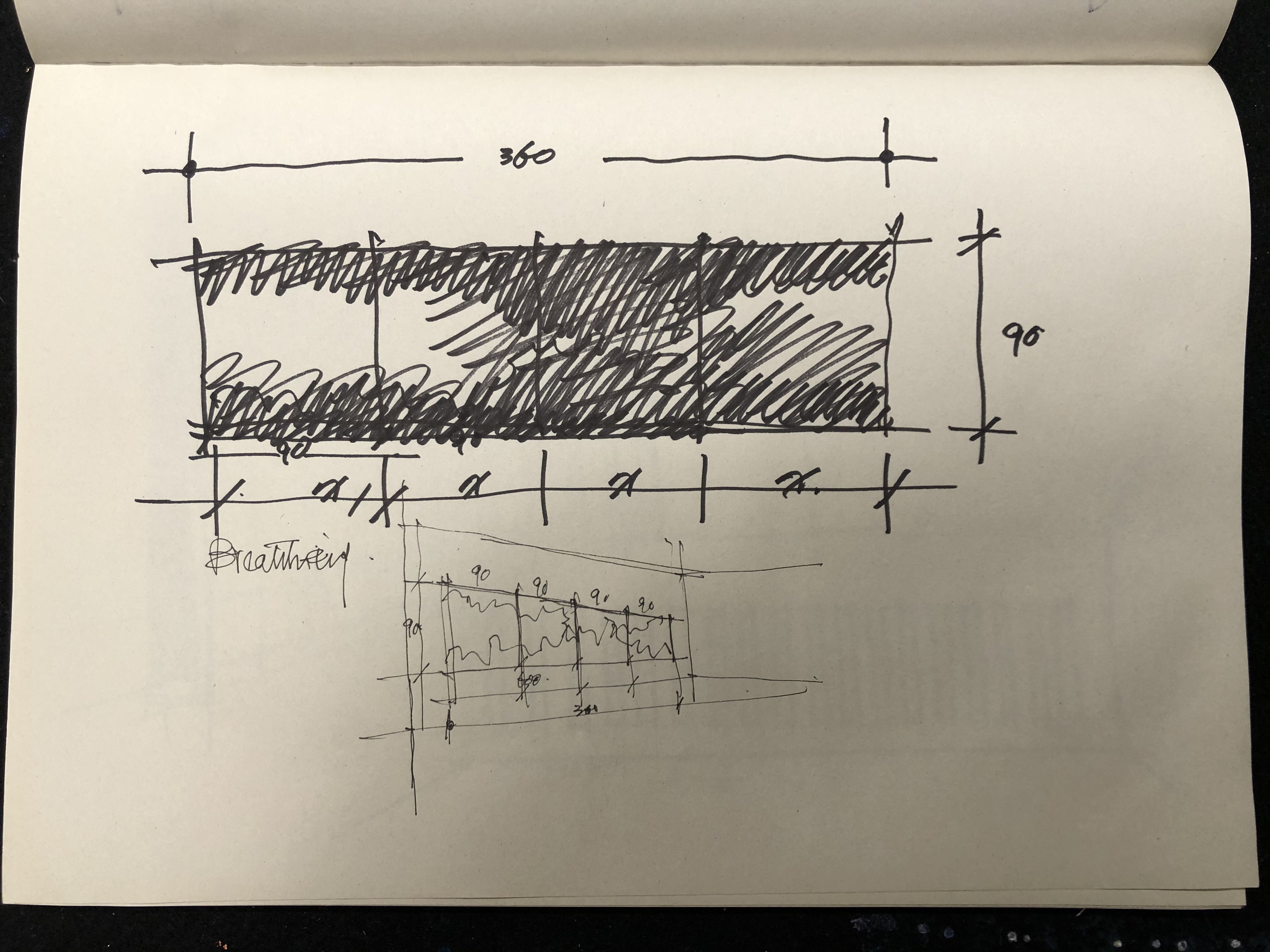
Preparatory sketch for Breathing series
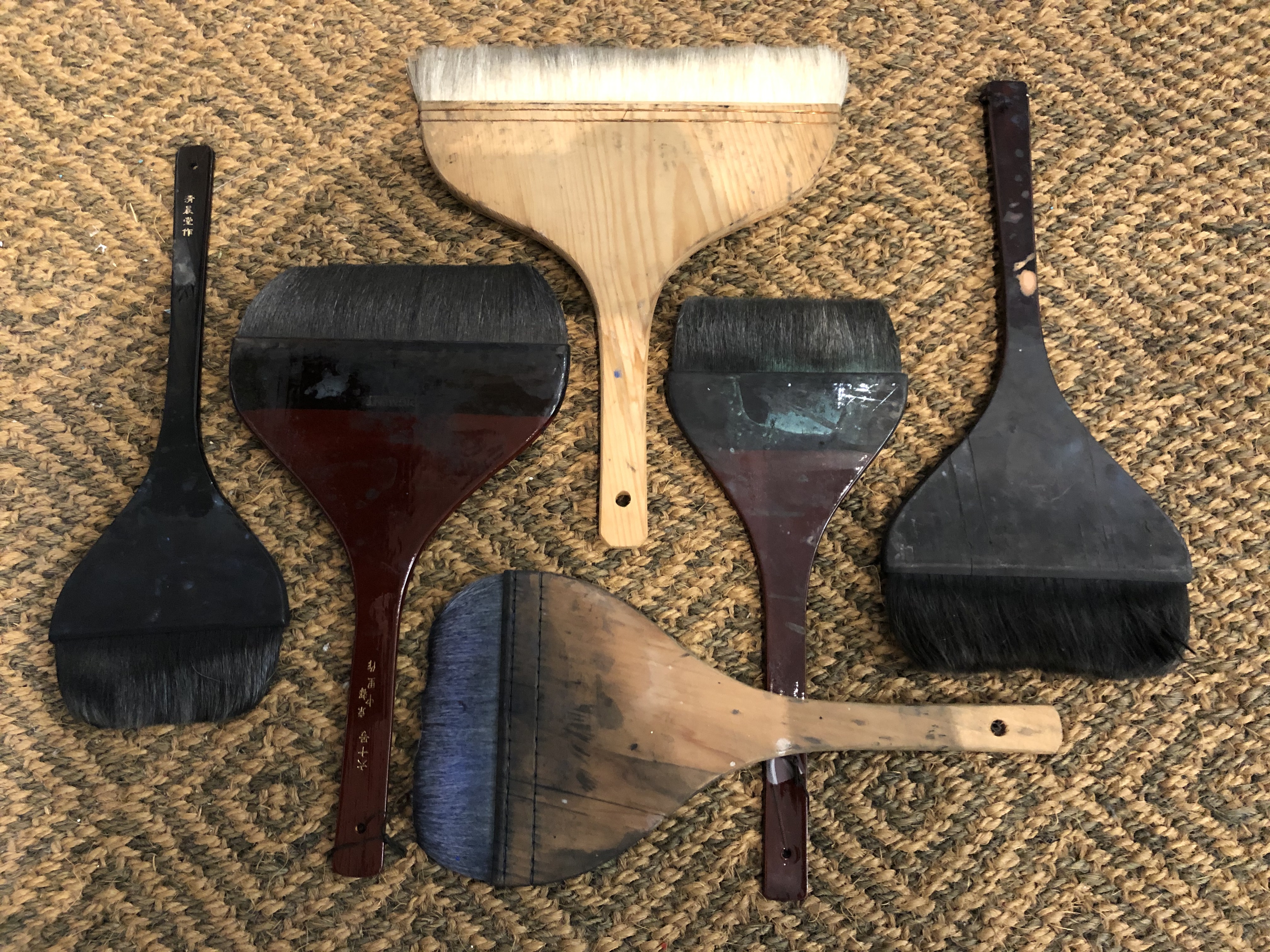
Large Japanese and Korean brushes used to create the Breathing series
MM: Do you pre-plan your ink paintings? Are there any preparatory drawings for your ink paintings, as you would have for an architectural project?
RF: Ink goes in two stages. In the early stage it's more of a direct transformation of landscape onto paper. I seldom do any sketches or any preparation for this kind of work. Now I'm getting into a stage in my career where I’m addressing more of a global context. I’m into more global values. So, I have to start thinking about how to get the message across. I have to prepare mentally.
If you look at my CV, I started my artistic practice very early at 15. At this age every Chinese or every young student has to follow all the old masters. They work on all the ink brush techniques, bit by bit, day by day, in a very routine manner. When I started trying to realise more global qualities in my art, then I really had to plan much further forward. I need to have a little sketch book. Here is a sketch book I keep for myself [shows sketch book to the camera and begins flicking through it]. I collect ideas, books I’m reading, and think over what I am doing at any given moment.

Raymond Fung, Dynasties, Ink and colour on paper (Polyptych), 2019, 137 x 828cm (total)
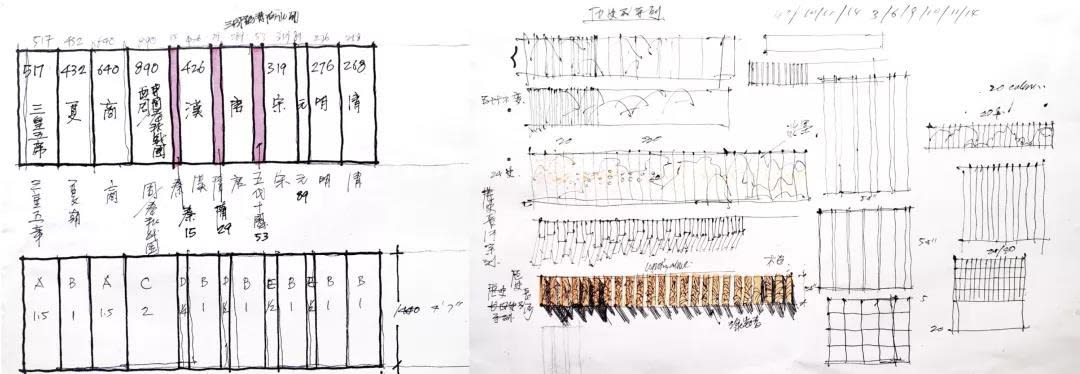
Preparatory sketches for Dynasties, whcih record its development from its original length of 17 to 18 feet, and later to the extended length of 30 feet, with a total 24 panels which reference the 24 dynasties
MM: So your sketch book is a space in which you develop ideas to be explored in ink. But do you work in pencil in the sketch book?
RF: [Showing sketch book in front of the camera...] Well, as you ask me that, let me show you something. Let’s jump into this series, Dynasties. This was the very early stage when I had the idea for 24 sections or 24 Dynasties. How would they go together? I started to develop from a first sketch, through many other sketches. Then I would come up with more in-depth studies. Finally, I came up with the 3D quality.
The earlier stage of my work mostly focused on brushwork, very traditional experiments. Everybody does the same thing: starting in an early stage. In Chinese art we have to be very focused on our painting, training in brushwork and how to execute it well. Only later on do we have to think of a better message to bring across to our viewers, to our audiences.
MM: Does your ink painting practice retain visible elements of your earlier experiences, training and teachers? Or are these an underlining foundation no longer visible?
RF: Very good question. It’s a foundation that has been built upon. So, you may see a little trace of Lingnan style, a little trace of what I have learned, skills or teachers from the past. In my present works you can only see a little bit of brushwork or technique with this kind of relationship to my training. Once I moved on to a more individual approach, the message became broader.
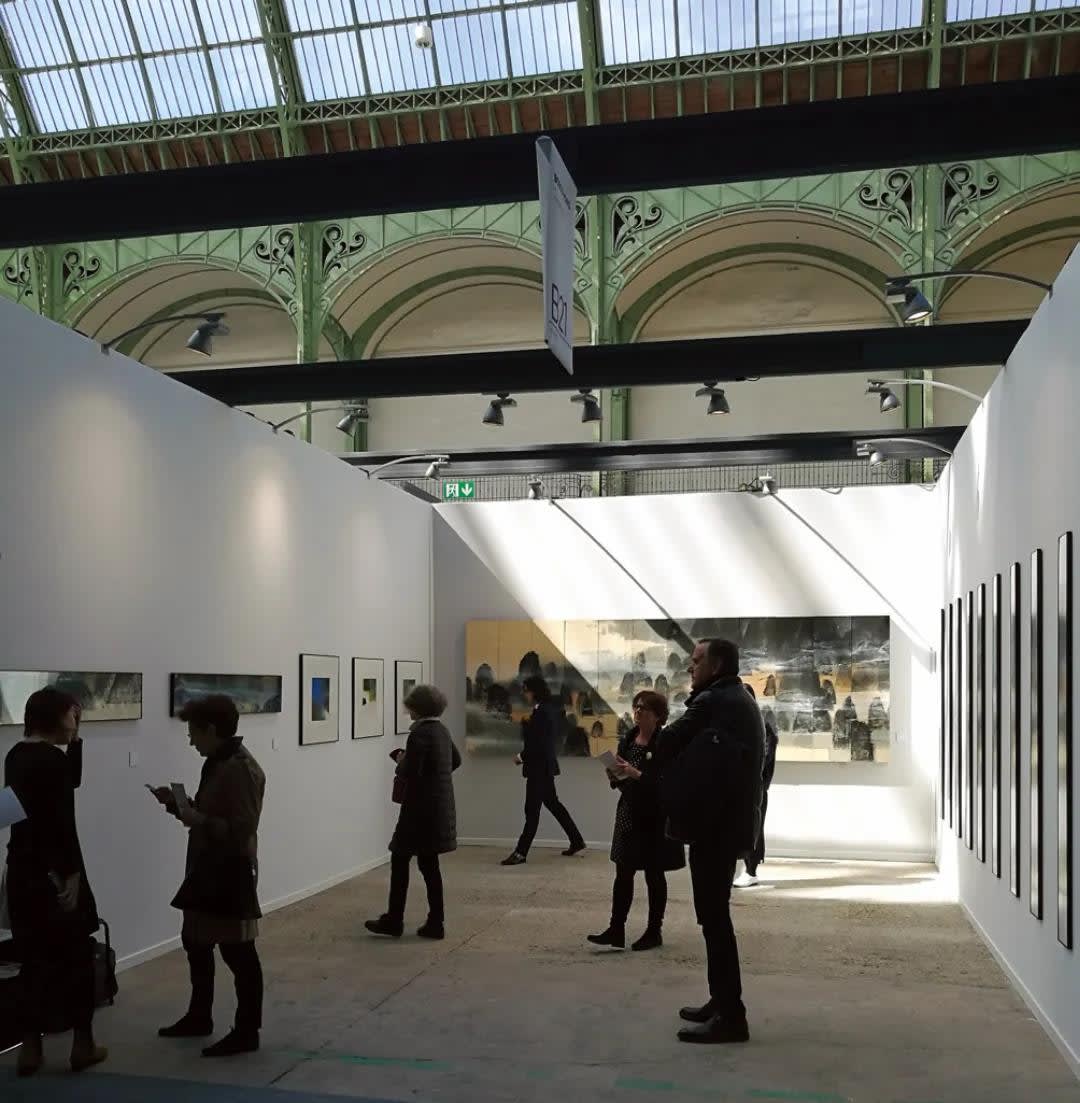
The featured work Dynasties with smoke effect has received high acclaim at Art Paris 2019
MM: Can you identify a particular point, even a particular work in your oeuvre, with that departure into a more individual approach?
RF: [Finding a copy of Hong Kong Lyric: Ink Paintings by Raymond Fung] Now, here I have a big thick book of myself. This was published by the Hong Kong University Museum and Art Gallery. About nine years ago they gave me a solo exhibition, and because of that I was given this big thick book. If I just casually turn on to any page [flicks through the catalogue]… Here is an earlier work [Unforgettable Moments] where you can see the brushwork and style. Though at the same time, you are starting to see less of this very early approach.
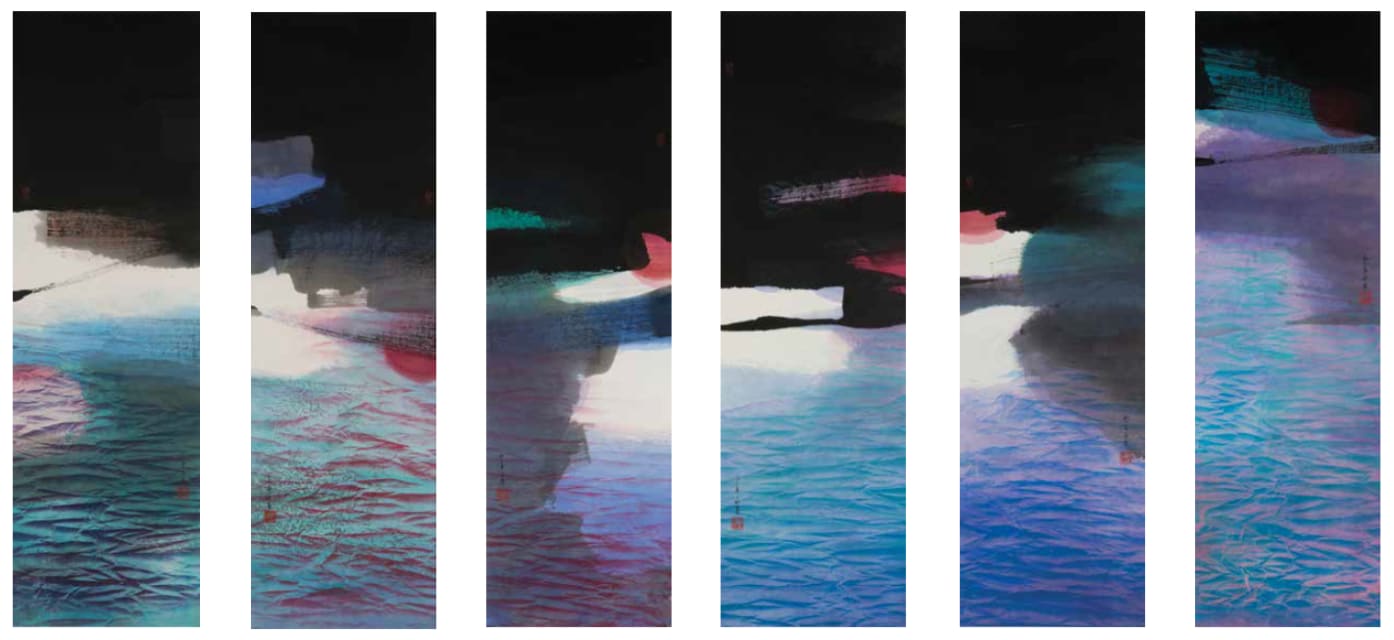
Raymond Fung, The Unforgettable Moment, Ink and colour on paper, 1992, 112.5 x 33cm (each)
Collected by The University Museum and Art Gallery (UMAG) of The University of Hong Kong
This one here, Cry of Nature (2), is in the collection of the Asian Art Museum, San Francisco. I made this after I went to Tibet. I think every Chinese artist normally starts with training in brushwork, travels through different sceneries, and comes back with memories. Then, of course, they transform these into paintings. This is a very early stage of artistic development, my experience is no exception. Looking back over the past 50 years, this development has finally led into something else, now you see very few traces of that very early style in my work. It’s a foundation.

Raymond Fung, Cry of Nature (2), Ink and colour on paper, 1997, 140 x 35cm (x2)
Collected by Asian Art Museum of San Francisco, Gift of the Yiqingzhai Collection
MM: How does your practice as an architect inform the presentation of your ink paintings within a gallery space? What role will your architectural training play in shaping the way your works will be curated at 3812 in London?
RF: I don’t know if you have seen the image of my exhibition at the Mall Galleries in London? This is a very good example because I went to London to experience the space. This was very important. I always have to plan very precisely how the works will go within a space. I never do anything before I go to see a place. So, I went over there to do all the measurements, to determine how I was going to present my works. It did matter, because 18 Shades in Ink are very narrow works, and I wanted to present them in a very strong manner. I wanted to determine how tall and how wide the space was. I needed to determine how I could best present my works. It’s a very big wall. Even though these paintings are narrow, they have to really extend. They have to bring your vision from one end to the other. It's like a rhythm. There’s a strong momentum in the piece. From a long distance you see their magnitude. Come closer and you see their details. This is the fascination of my work. You have to see it from distance and then come back to look from a closer angle.
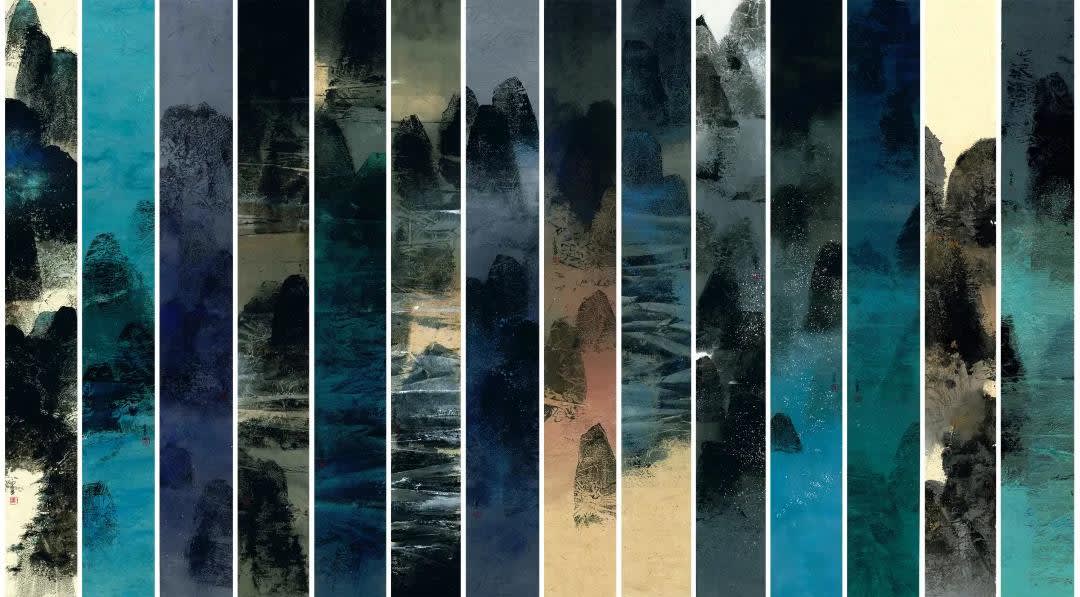
Raymond Fung, 18 Shades in Ink, Ink and colour on paper, 2018, 136 x 16.5cm (each)
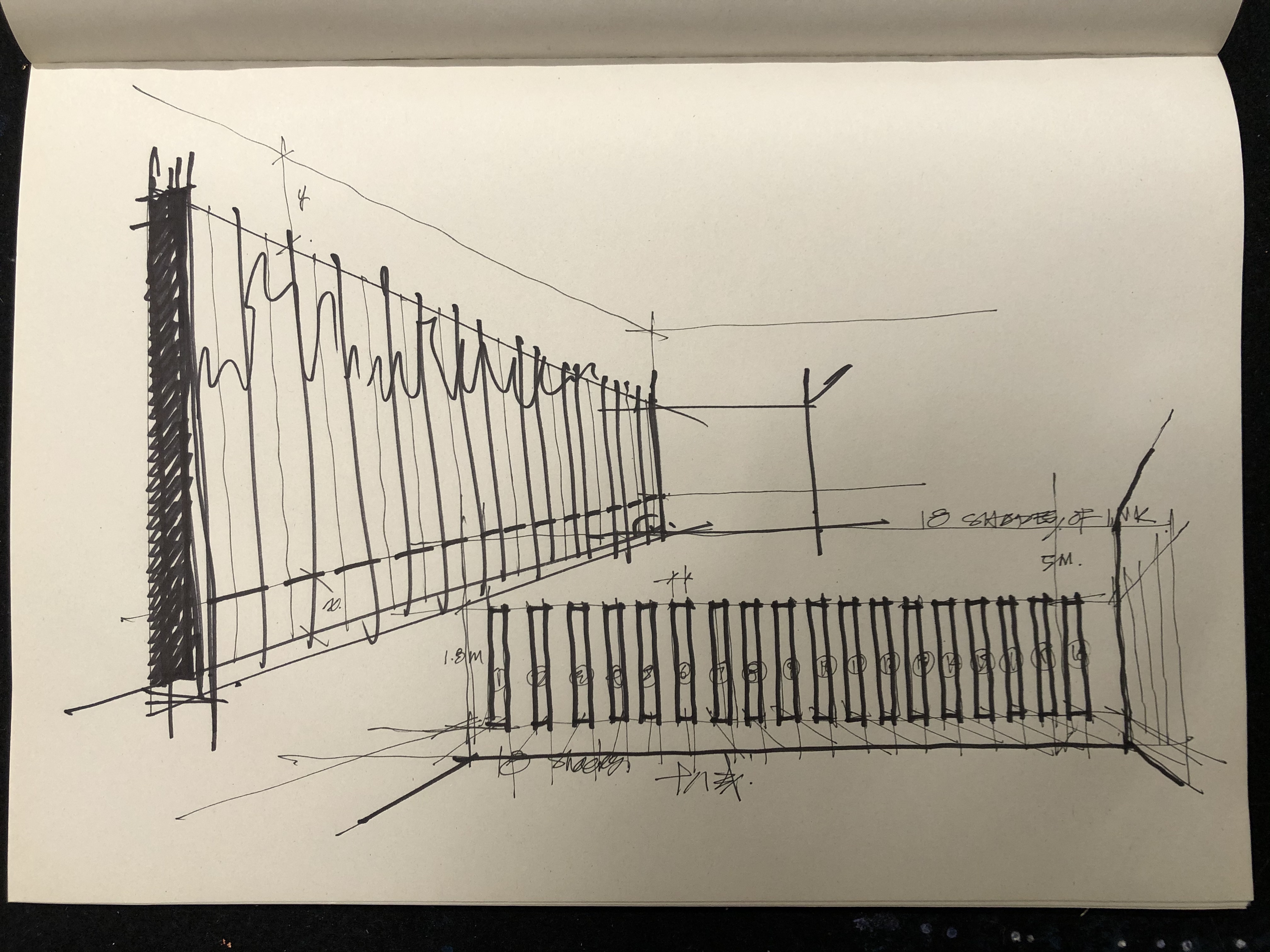
Preparatory sketch for 18 Shades in Ink
MM: Do you think of your paintings as integrated series or individual objects? Do they follow a holistic vision, or are they individual pieces thematically connected?
RF: I've been to 3812 Gallery in London twice. If they have a long wall, it’s a good fit for a set of paintings. If not, then I have to make something more individual. Again, I'm very conscious of how the paintings fit into the space. I’m not like other Chinese artists who don't care. They just paint, hand it over, and let the curator or someone else hang them and deal with any problems. I have to create for the space in which I show. It’s a holistic approach I think, because I have to know how the space, colours and lighting effects...how everything will go together before I deal with the painting.
MM: Some of the works included in the exhibition are primarily identified as landscapes, others have titles that focus more on materials and serial forms, for example the 18 Shades in Ink series. Are the landscapes we see located in specific physical spaces or sites? Or are you more interested in painting landscapes as a mechanism to explore something outside of physical space?
RF: In the earlier stage of my career most of my paintings were painted in and of Hong Kong. There is only one painting in this exhibition that depicts a specific site: Sheung Sze Wan, one of Hong Kong’s waterfronts. This was an early stage in my work. As time went on, I tried to depart from specific landscapes. I felt that I had fulfilled my commitment to painting Hong Kong. It's very natural that I would want to paint Hong Kong. I was born here, I have a passion for this place. So, I like to paint my own place. Although I'm an architect, I don't want to paint buildings, tall towers or skyscrapers. The best side of Hong Kong is its natural beauty. Happily, I live in Sai Kung. Here you can see mountains, waters, rivers. I love the place. The very early stage of my work saw the value in painting Hong Kong’s natural qualities.
For this particular show in London, you may find one or two such pieces, but again these are the first stage of my development. It's kind of a transition. This time in 3812’s London Gallery you will see a little touch of the past alongside my present development, evident in 18 Shades in Ink. These are not landscapes of any particular location. They are landscapes as a point through which you see a person’s mindset. Lots of Chinese paintings appear as if one is looking out through a window or a door. Outside there are mountains, perhaps one’s own country. I wonder if we see things differently through these windows. It all boils down to the viewer’s mindset. Do you want to see the landscape as something positive or negative, happy or sad? It's through your mindset that the windows and the mountains relate to a person themself. In my eighteenShadesthere are eighteen windows looking out onto mountains. Literally, they are mountains, but they are beyond mountains. They show the mindset through which you see your world: whether you see your world in a very positive or negative sense, very pessimistic or very optimistic. They are a kind of mental exercise.
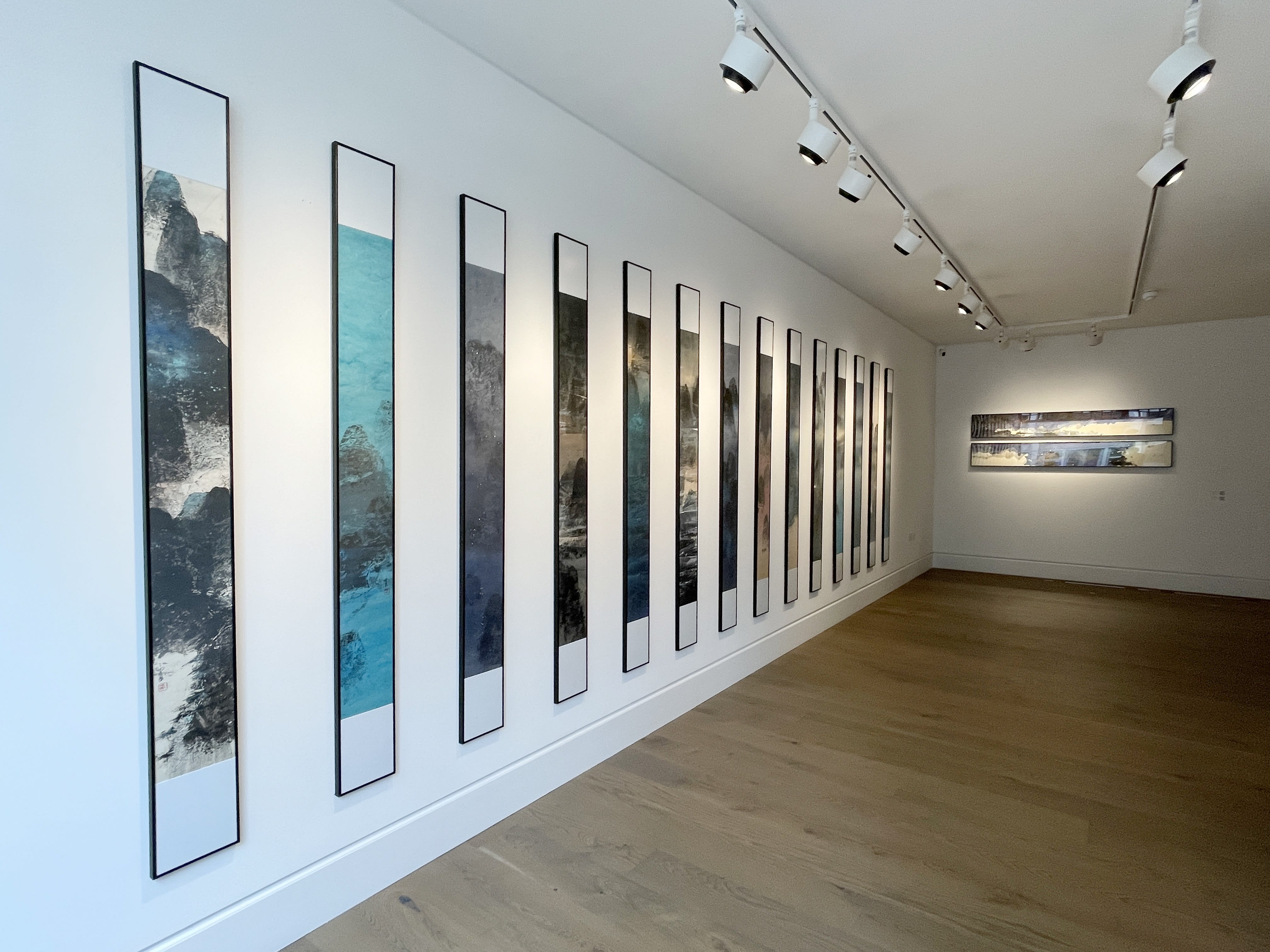
Installation at 3812 Gallery London
MM: This seems like a shift from landscape as topography to landscape as an experience of viewing. Whose experience are you mediating in these paintings? Are we seeing an iteration of your experience, or are you facilitating an experience separate from your own?
RF: The latter. Different people look through these windows, with different angles of vision, different mindsets. It’s not my experience. It’s how you see through the window. When different people look through these windows, they have different perspectives, different mindsets. I expressed myself through my earlier work. This second part is about how other people see.

